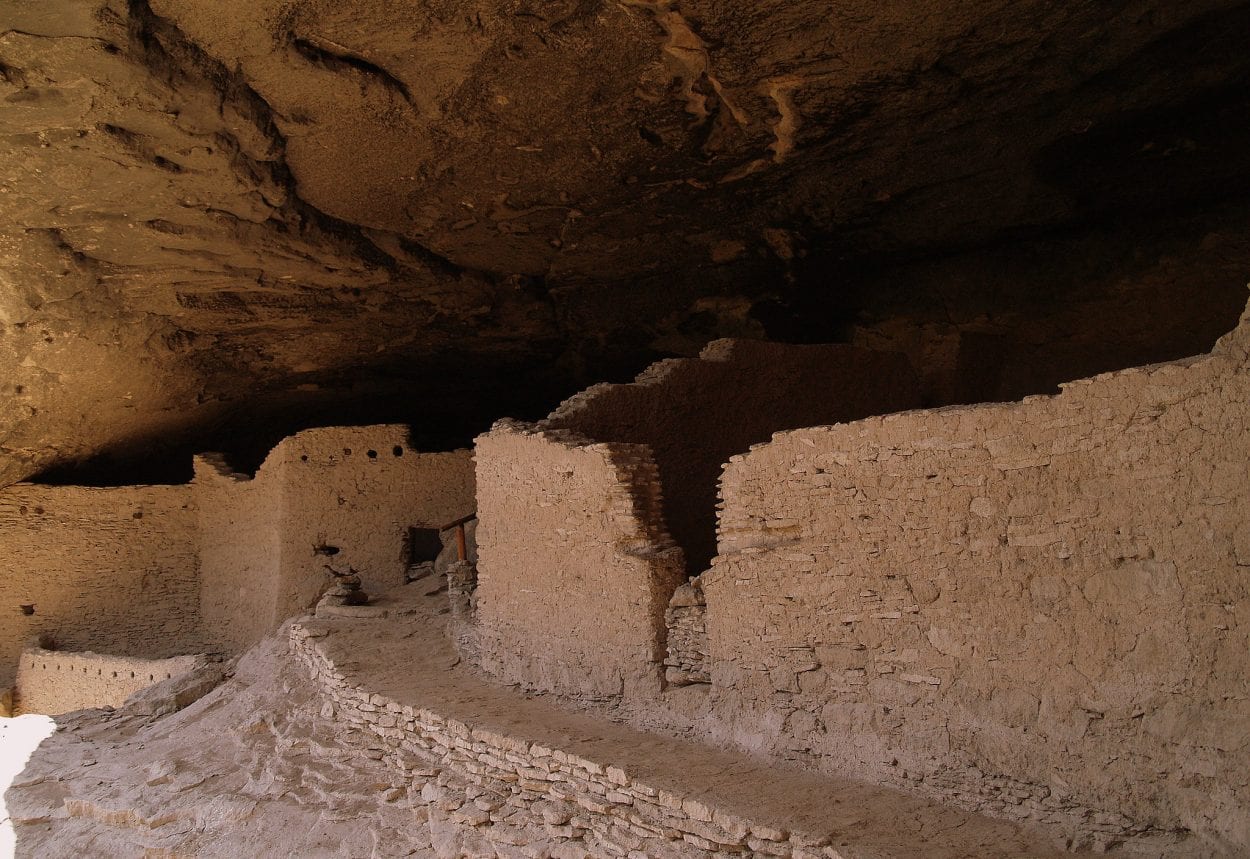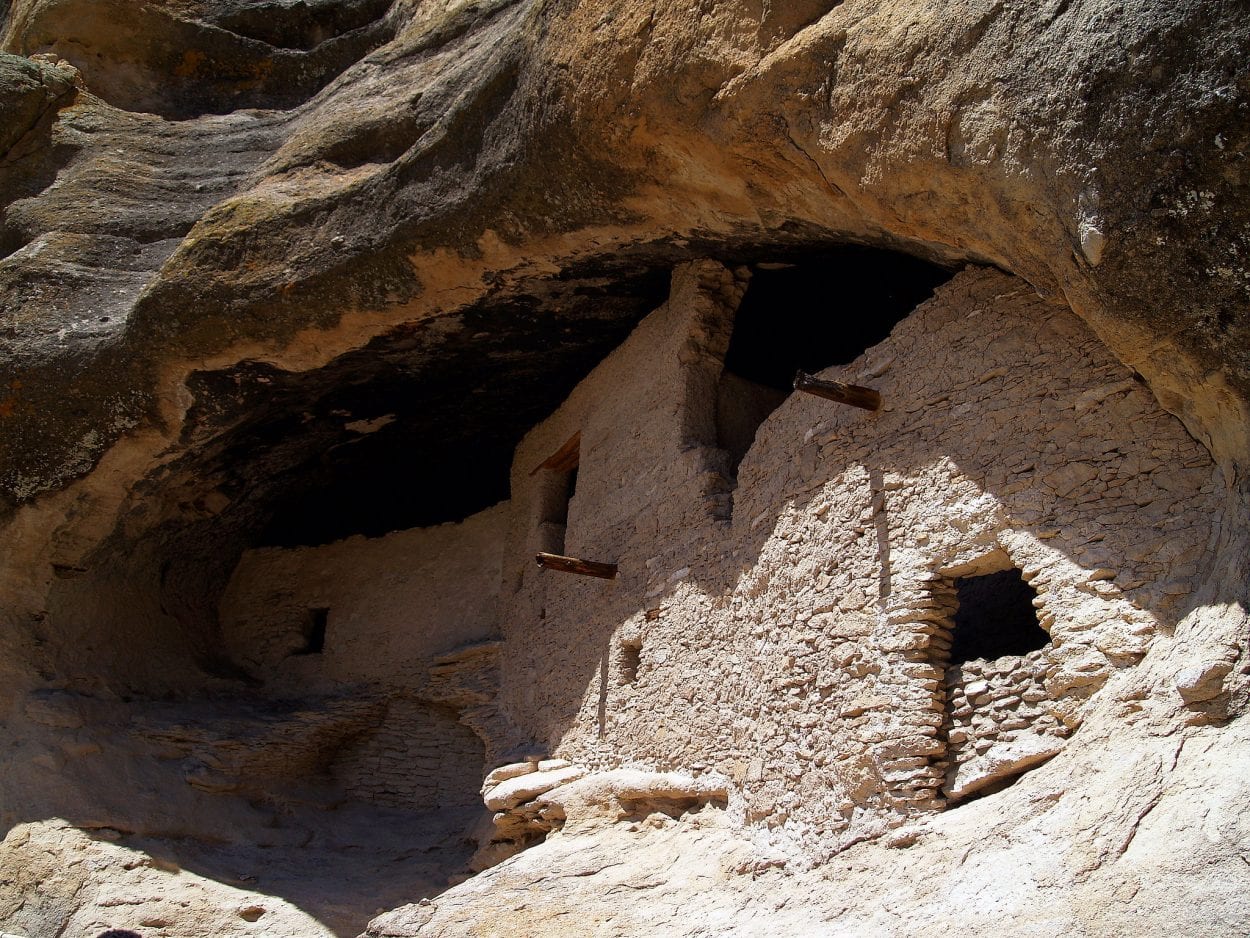The Gila Cliff Dwellings is an archaeological site, and ancient settlement constructed by the pueblos Mimbres branch of the Mogollon, located in southwest New Mexico of the United States of America.
The Mimbres, also called the Mimbres Mogollon was a subset of the larger Mogollon culture, centred on the Mimbres Valley which developed a distinct cultural context during the “Three Circle Phase”, and the Classic Mimbres Period.
The Gila Cliff Dwellings refers to two main ruin sites, along with a collection of smaller ruins that was inhabited sometime during the Classic Mimbres Period from AD 1000-1130. Evidence of unconnected occupation can be traced through a 2,000-year sequence, starting with Archaic rock shelters, a Mogollon circular Pit House, Classic Pueblo periods to the Apache.
The Mimbres used natural caves that formed within steep-sided canyons to build interlinked settlements. The overall site covers an area of 553 acres inside five cliff alcoves, overlooking the Cliff Dweller Canyon which opens onto the West Fork of the Gila River.

Studies have identified 46 individual rooms built from Conglomerate rock quarried from the adjacent cliff-face. The Mimbres also built several rectangular surface structures using masonry, with some structures also being made of wattle (interwoven twigs).
Archaeologists estimate that the dwellings supported between 10-15 families living on a diet of squash, corn, and beans, along with meats such as mule, deer, and bison through hunting.
After the Mimbres abandoned the caves, their remote location and the site being located in Apache territory, meant that they were relatively preserved until their rediscovery by Henry B. Ailman in 1878 who was prospecting up the Gila River (although it is noted that Native Americans were most likely already aware of the ruins by this time).

Their rediscovery would lead to the site being looted by private collectors, with several reported mummified bodies being removed and subsequently lost. The only human remains recovered and preserved was during 1912, when a child burial nicknamed “Zeke” was discovered and sent to the Smithsonian Institute (Cat. No. 273340 USNM).
Excavations have also managed to recover several items in situ, with the most notable being a bracelet crafted from a Glycymeris (shells) Bittersweet clamshell that originates from the Gulf of California.
Header Image Credit : – CC BY-SA 4.0





